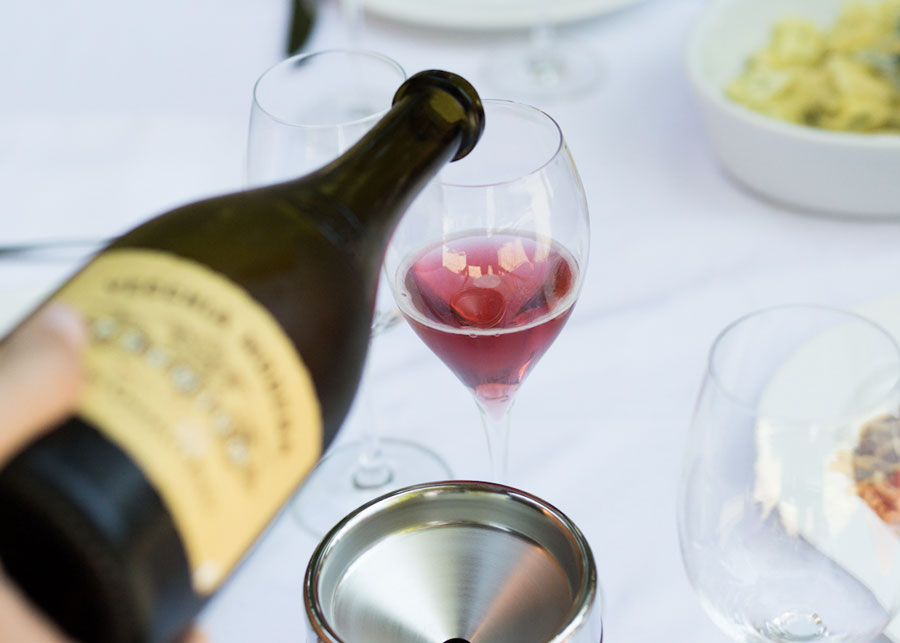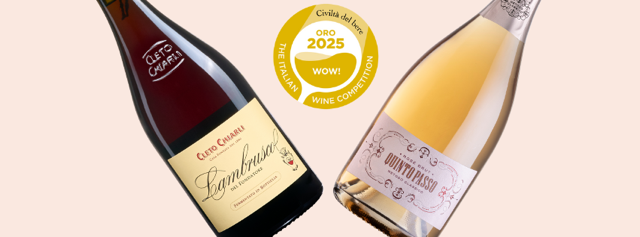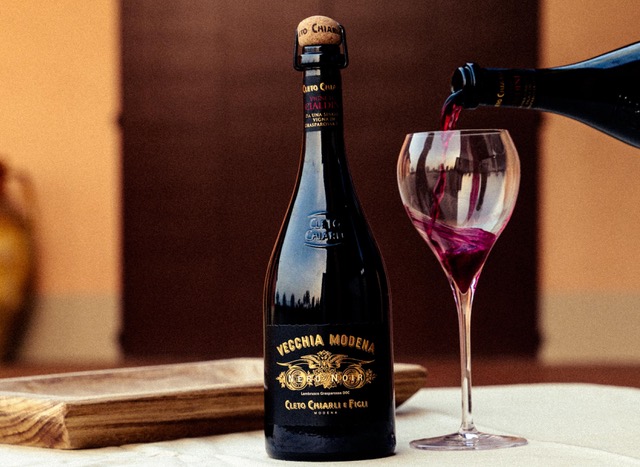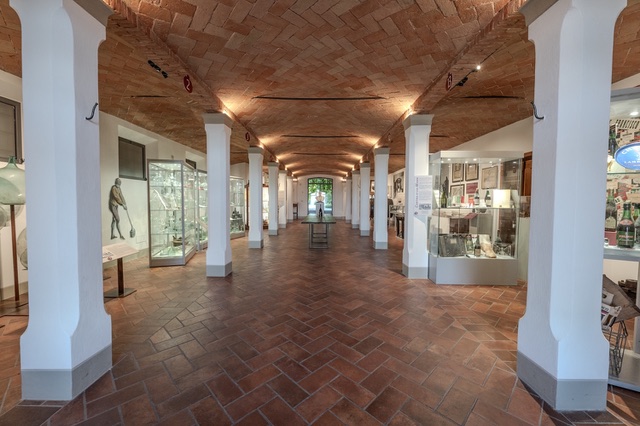Summer is a crisp, light red wine, best if it’s Lambrusco di Sorbara Doc Vecchia Modena Premium by Cleto Chiarli
Light and fresh are the keywords for summer drinking. This means choosing a wine lighter in structure, weight, color, and, of course, percentage of alcohol, usually less than 12 degrees. And, of course, a lower alcohol percentage does not mean less flavor at all. Red wines that can be served chilled, increasing their appeal, must still have specific characteristics: be young wines, not overly structured or tannic, and provide a broad aromatic spectrum and good acidity.
Cleto Chiarli began making Lambrusco in 1860, and among its many labels, it has one cut-out for summer that seems tailor-made to accompany the season. Exuberance and lightness come together in Vecchia Modena Premium: a linear, energetic, bright, fragrant, full-bodied sparkling Lambrusco di Sorbara from the Sozzigalli Estate.
In the Castelvetro winery, selections of the best Sorbara and Grasparossa grapes have been vinified since 2000, following an adaptation of the Charmat Method, which, if properly executed, gives outstanding results.
To make Vecchia Modena Premium, the wine is not re-fermented as with most Charmat method wines. At Cleto Chiarli, the unfermented must is transformed into sparkling wine, preserving in toto the subtle yet generous array of fruit aromas that Sorbara can express.
From an organoleptic point of view, Vecchia Modena Premium falls in the category of a Brut wine. It has a dry, savory, harmonious, pleasantly acidic taste, fine and evanescent mousse, and a clear and lively color with pink highlights. The bouquet is ample, intense, and pleasant and captures the essence of these low-yielding, expressive grapes. The alcohol content is around 11 degrees.
What kind of Lambrusco?
This is a Lambrusco di Sorbara from grapes harvested in the family's Sozzigalli Estate vineyard.
The vineyard is planted with a Massal selection of rare indigenous clones. The grapes preserve the historical/original characteristics of Sorbara, which has clusters with sparse berries often characterized by pronounced millerandage (seedlessness).
These aspects and the sandy soil rich in salts make this Lambrusco di Sorbara clear in color, rich in acidity, fresh, and with vivid aromas.
Regarding the winemaking: the must obtained from soft pressing is immediately chilled and, after static decantation, is stored at 0°C. to prevent fermentation. Given the delicate nature of the Lambrusco Sorbara grape, the Chiarlis have modified the typical Charmat/Martinotti method, which usually requires a first alcoholic fermentation after harvest and a second fermentation to conclude the alcoholic fermentation and to produce the Co2 of sparkling wine.
At Cleto Chiarli, the alcoholic fermentation, and the prise-de-mousse that produces the Co2 that we find in the bottle, come from the fermentation of the grape must directly to sparkling wine in pressurized tanks.
This process, conducted with a single fermentation instead of the usual second fermentation of the Charmat method, requires longer times and at much lower temperatures. The aromas and flavors present in the grapes are preserved almost intact.
Managing the Co2 produced by fermentation requires continuous monitoring to achieve a fine mousse, which is why it occurs gradually.
The single fermentation brings the most distinctive characteristics of the grape variety (fresh red fruit, richness, and harmony of the aromatic components, high acidity well balanced by residual sugar) to the Lambrusco wine for a maximum expression of the grapes and their terroir. In other words, Cleto Chiarli produces to order so that each bottle that leaves the winery tastes like just harvested grapes with their full potential intact.
An explosion of summer flavors
During summer, you need an irresistible yet light, fragrant, and fruity wine - in other words, modern, capable of igniting cheerfulness with flavor. So what can Lambrusco di Sorbara Vecchia Modena Premium be paired with? With something that tastes of summer, like a ratatouille similar to the simple but enticing recipe seen in the famous homonymous animated film.
But also try your hand at a couscous made the Pantelleria way. Influenced by the traditional Moroccan cous cous, the lighter version handed down over generations in Pantelleria calls for combining semolina "incognita" or steamed in a terracotta pot, with zucchini, peppers, and eggplant and fish broth, preferably with fish like grouper, red scorpionfish, St. Pierre, sea bream and pheasant fish.



